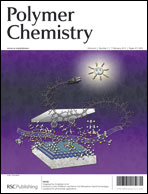Biodegradable alanine and phenylalanine alkyl ester polyphosphazenes as potential ligament and tendon tissue scaffolds
Abstract
New polyphosphazenes were designed, synthesized, and characterized to determine their potential as scaffolds for ligament and tendon tissue engineering. The carboxylic acid moiety of the amino acids L-alanine and L-phenylalanine were protected with alkyl esters with increasing chain length from 5 to 8 carbon atoms. This combined the hydrolytic sensitivity of the amino acid ester polyphosphazenes with the elastomeric characteristics induced by the long chain alkoxy polyphosphazenes. Test side group substitution reactions were performed on the cyclic small molecule model, hexachlorocyclotriphosphazene (NPCl2)3, to determine if steric hindrance would inhibit the degree of chlorine replacement by the amino acid ester units. Counterpart polymers were then synthesized by replacement of the chlorine atoms in poly(dichlorophosphazene) (NPCl2)n by the same amino acid esters. The glass transition temperatures of the polymers decreased with increasing alkyl ester chain length, ranging from 11.6 to −24.2 °C. Polymer hydrolysis was studied for solid samples in deionized water at physiological temperature for 12 weeks. The starting pH was 6.3 and the final pH ranged between 5.2 and 6.8. Polymer film mass decreased between ∼8.7 and 26 percent during the 12 week period, while the molecular weights decreased ∼57 to 99 percent.


 Please wait while we load your content...
Please wait while we load your content...